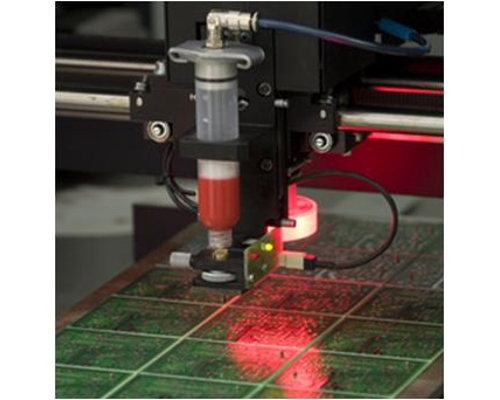Roartis IQ-BOND 3204
IQ-BOND 3204 is a solvent-free, one-component, pre-mixed, thermoset epoxy based adhesive, developed for high speed dispensing and/or jetting applications.
It has been designed specifically for the bonding of surface mount devices (SMD), to printed circuit boards, prior to the wave soldering process. Characterized by excellent dispensability, resulting in high dot profiles. Also, it’s chemistry has been selected to provide good green strength, resulting in optimum pick & place performance of all common SMD components.
The low to medium viscosity, combined with very high thyxotropy, makes IQ-BOND 3204 the ideal surface mount adhesive for very small components. The rheology has been optimized to jet small dots at very high speeds.
IQ-BOND 3204, despite its high reactivity, has a low exotherm.
Unlike many other single-component adhesives, characterized by a short potlife, IQ-BOND 3204 has a long potlife of > 1 month at room temperature.
When fully cured, IQ-BOND 3204 is resistant to moisture, cleaning agents and dilute acids and bases. Also it exhibits very good high thermal resistance, for example typical SnPb-, as well as lead-free soldering processes.
IQ-BOND 3204 is a solvent-free, 100% solids material.
For cleaning un-cured IQ-BOND 3204 from stencils, screens, squeegee, or other equipment, the use of IQ-CLEANER 9500 is recommended.
Product properties:
- Appearance: Red Thyxotropic Paste
- Chemistry: Epoxy
- Odor: Faint
- Mix-Ratio: Not Applicable – pre-mixed single component adhesive
- Fineness: < 20 μm
- Viscosity: ~ 250.000 mPa.s (Brookfield SSA25, 25°C at 5 rpm)
- Thyxotropic Index > 7 (Brookfield SSA, SC-25 – ratio of 0,5 rpm / 5 rpm)
- Density ~ 1,3 gr/cc
-
Cure Speed:
- 30 “ @ 175°C
- 1 – 2 minutes 150°C
- 5 minutes 120°C
- 30 minutes 80°C
For good mechanical strength, cure according above conditions is recommended, and a minimum of 100°C required. The final bond strength will depend on the residence time at the given cure temperature. Typically, a higher curing temperature, as well as a longer cure time will result in higher adhesion strength, and improved polymer crosslinking.

